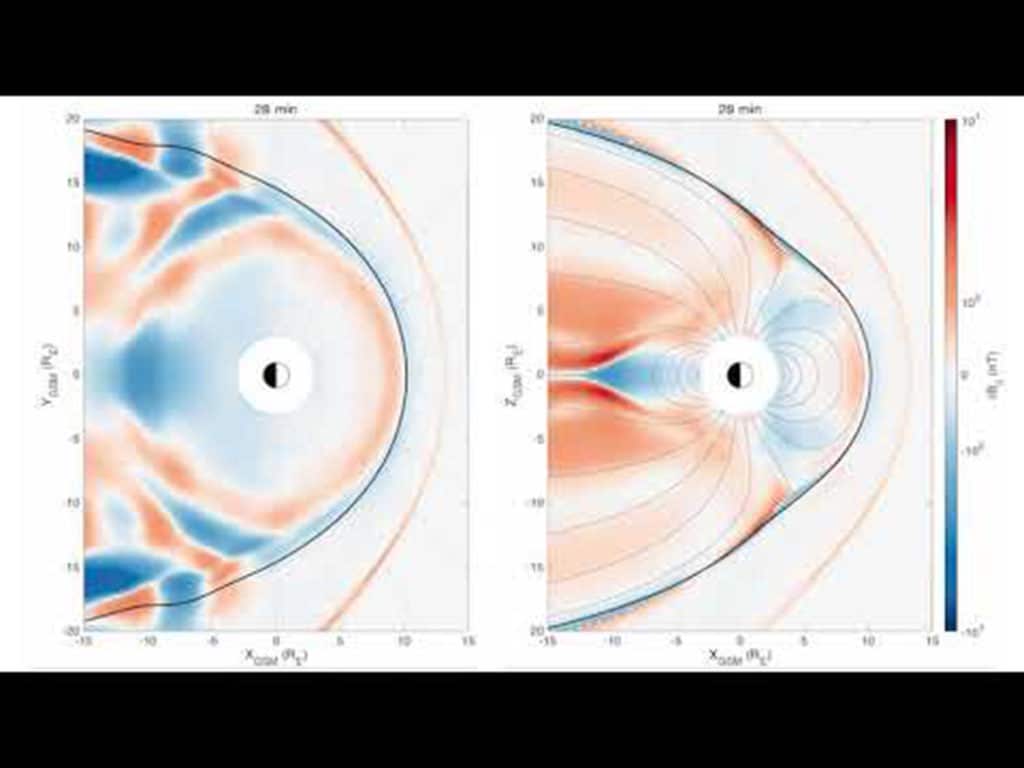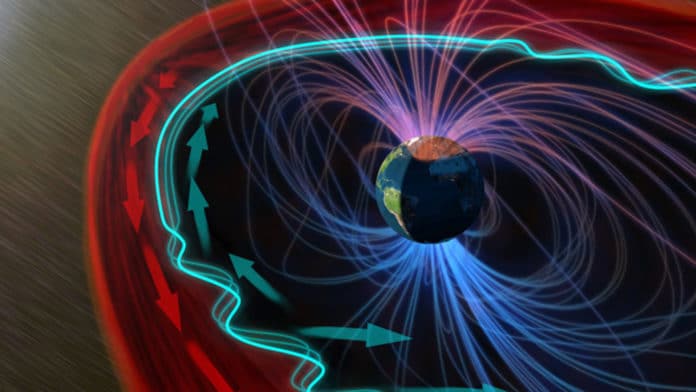The solar wind is the stream of charged particles released from the Sun. The magnetosphere, a bubble created by the Earth’s magnetic field, shields Earth from solar and cosmic particle radiation and erosion of the atmosphere by the solar wind.
When the solar wind hits the magnetosphere, energy waves are transferred along the boundary between the two. Scientists used to believe that the locks must ripple in the direction of solar wind. But, a new study by the Imperial College London reveals some waves do just the opposite.
For this study, scientists used a combination of models and observations from NASA’s THEMIS satellites. Using models, they illustrated how the energy of the wind coming from the Sun and that of the waves going against it could cancel each other out.
This created standing waves with a lot of energy. Scientists found that when solar wind pulses strike the magnetosphere, the waves that form not only race back and forth along Earth’s field lines, but also travel against the solar wind.

Lead researcher Dr. Martin Archer from the Department of Physics at Imperial, said, “It’s similar to what happens if you try walking up a downwards escalator. It’s going to look like you’re not moving at all, even though you’re putting in loads of effort.”
“These standing waves can persist longer than those that travel with the solar wind. That means they’re around longer to accelerate particles in near-Earth space, leading to potential impacts in regions like Earth’s radiation belts, aurora, or ionosphere.”
Scientists also listened to the sound of the waves traveling across the magnetospheric boundary. They translated the electromagnetic signals from the THEMIS satellites into audio.
Dr. Archer added: “While in a simulation we can see what’s going on everywhere, satellites can only measure these waves where they are, giving us only time-series, wiggly lines. This sort of data is best suited to our sense of hearing than sight, so listening to the data can often give us a more intuitive idea of what’s going on.”
“You can hear the deep breathing sound of the standing surface waves persist throughout, rising in volume as each pulse hits. Higher pitched sounds, associated with other types of waves, don’t last nearly as long.”
Journal Reference:
- M. O. Archer, M. D. Hartinger et al. Magnetopause ripples going against the flow form azimuthally stationary surface waves. DOI: 10.1038/s41467-021-25923-7
